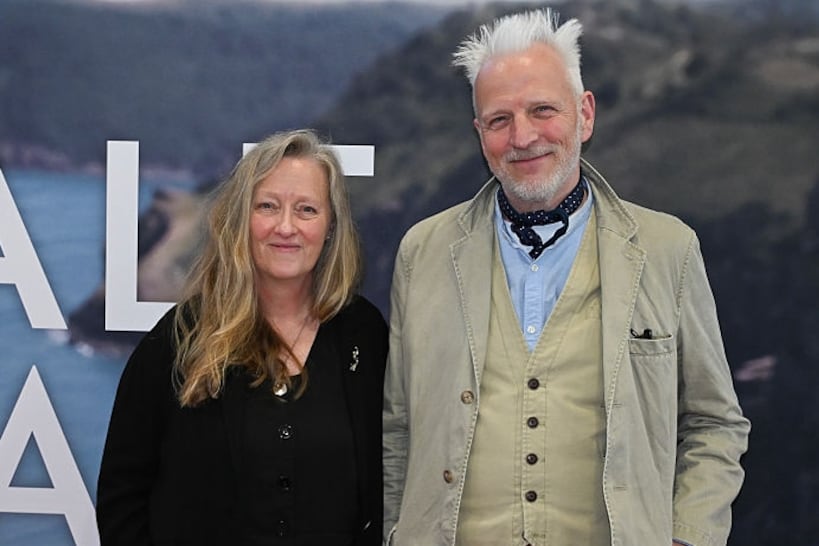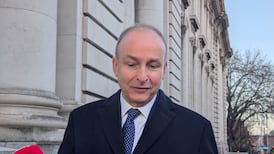During months of hearings at the Surrey inquest into the deaths of four young British soldiers and one civilian at the Horse and Groom pub in Guildford on October 5th, 1974, coroner Richard Travers maintained that the families of the five who died were the most important people in the room.
Except they were not in the room, because they had no legal representation and could not afford to travel from their homes in Scotland and the north of England or pay for their accommodation in Surrey - the first time in a Troubles legacy inquest where legal aid was denied.
There were 10 pre-inquest reviews between 2019 and 2022; and 13 days of hearings in the inquest itself, before it finally produced a verdict of unlawful killing on Thursday.
Paul Hill, Gerry Conlon, Patrick Armstrong and Carole Richardson were wrongfully convicted of the bombings in 1975 and spent 15 years in prison for a crime they did not commit. They became known as the “Guildford 4″.
READ MORE
The push for the inquest had come from Ann McKernan, sister of Gerry Conlon, and Yvonne Tagg, a survivor of the bombings. When Mrs McKernan died in 2018, her place was filled by the sister of one of the deceased: Cassandra Hamilton.
Lawyers in the room were there to represent “interested persons”. In this case, the definition covered the Surrey Police. So, too, were the Metropolitan Police, the ministry of defence, while the inquest itself had its own legal team. In all, two QCs and four junior barristers, with solicitors to match.
And they were in court many times, with 10 pre-inquest reviews between 2019 and 2022; and 13 days of hearings in the inquest itself, before it finally produced a verdict of unlawful killing on Thursday.
Quickly known as “the Guildford Four”, Paul Hill, Gerry Conlon, Patrick Armstrong and Carole Richardson were wrongfully convicted the following year, released only in 1989.
[ Guildford pub bomb planted by ‘courting couple’, coroner rulesOpens in new window ]
Put simply, they wanted to know what had happened and why. Coroners have some discretion about setting an inquest’s scope. Early on, however, it became steadily clearer that this one would be narrowly focused.
Having limited it to the essentials of who the victims were, and when, where and how they died, the coroner decreed that no public interest would be served by expanding it into an Article 2 inquest, under the powers of the European Convention of Human Rights.
And this led to the decision that there was no need for a jury.
Article 2 status
The decision not to hold an Article 2 inquest meant an end to the families’ hopes that they would get British legal aid, said Christopher Stanley of Belfast-based KRW Law, who would have represented them.
Noting that the Guildford families’ claims for legal aid should have been covered by rules in place under the Belfast Agreement, Mr Stanley said this is the first “legacy” inquest where families were refused.
As a result, not only have the families’ questions not been asked or answered, but it could be argued, he said, that important matters of public interest in one of the most important of all cases in the Troubles have been sidestepped.
One of the two surviving members of the Guildford Four, Patrick Armstrong, so damaged by his 15 years wrongly spent in jail that there were times since when he “just wanted to be back in prison”, sought interested person status. But he was denied.
This removed the last critical voice from the proceedings: Mr Armstrong’s lawyer, Alastair Logan, who has faithfully represented him since 1974, knows the case backwards and would have made a vital contribution.
In late 2019, more than 700 files on the 1974 IRA bombing campaign, scheduled for release in 2020, were reclassified by the Home Office – apparently for a further 75 years. Inquest papers showed that Surrey Police had applied for the files to stay closed.
However, these files were available to the inquest, should the “interested persons” before the court ask for them. The coroner delegated to Surrey Police the responsibility for disclosure. In the end, just two emerged.
In the final report of the 1994 inquiry into the Guildford Four miscarriage of justice, Sir John May wrote that the bombings were the first in a new wave of Provisional IRA attacks in England culminating in the 1975 Balcombe Street siege.
Central tenet
This claim became a central tenet of the inquest: it was read out in court at the final hearing. However, it is wrong since the IRA unit had carried out earlier attacks in 1973 and 1974 – a fact drawn to the coroner’s attention.
By adopting Sir John May’s claim that Guildford was the first attack in a new campaign, the court effectively absolved the police and security services of responsibility for failing to take precautions to prevent the Horse and Groom bombing.
But police had known that the IRA was preparing to attack nearby Aldershot, as shown by a document seized in an IRA safe house after an attack on Ripon barracks in March 1974. Yet no alerts were issued. The significance of this was raised but played down at the inquest.
Forensic evidence about the composition of the Guildford bomb was given by Lorna Hills, a scientist of the Porton Down-based Forensic Explosives Laboratory, who said the 4.5kg bomb could easily have collapsed the pub, killing more.
However, counsel to the inquest Oliver Sanders QC did not ask her about forensic links that existed between the Guildford bomb – equal in weight to four bottles of wine – and bombs that exploded after the Guildford Four were in custody.
Within weeks of Guildford, British police had matched fingerprints found after Ripon to prints on a watch-dial of a bomb defused at Aldershot railway station in December 1974, just weeks after Guildford, and another at a soldiers’ pub in Warminster a day later.
Two IRA bombers from that same unit later gave detailed admissions that they had been involved in the Guildford bombings, giving details only the real bombers could have known. Yet they were never charged with it. The inquest heard none of this.
Following the final hearing, Ann Hamilton’s family’s solicitors said they knew that there were “serious questions to be asked around all the circumstances into how our sister and the others were murdered and who was responsible.
“This was our last chance to engage in a process to produce truth, justice and accountability, but we have been excluded,” they said, “Our voice, on behalf of Ann, was not heard, and our presence in this process was absent.”









